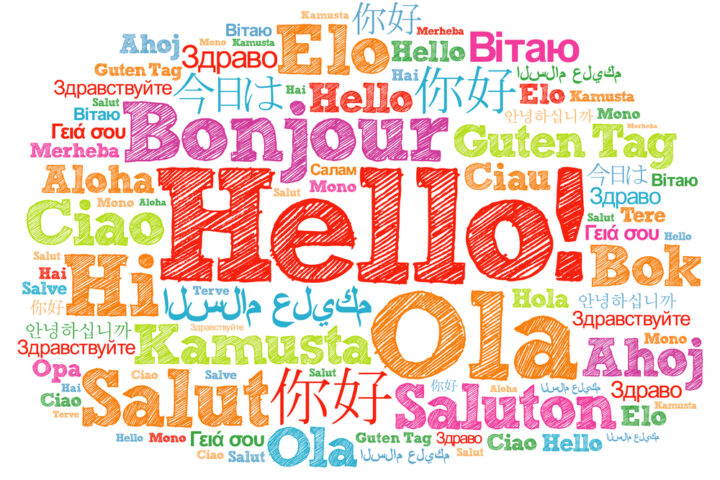If a company wishes to compete internationally, it recognizes that it needs to adapt products and services to the markets. In other words, it involves the translation of content into other languages or more fully localizing it for specific cultural contexts.
Given that, what is the difference between translation and localization anyway? Why does it matter?
Understanding the differences between these two strategies will allow your business to communicate more effectively across the world. This can make the difference between international expansion on the fly and fatal (and well-publicized) mistakes that stop growth in its tracks.
Definitions: Translation vs. Localization
At a basic level, translation and localization both involve adapting content from one language into another.
Translation focuses directly on language itself: taking text or audio from one tongue and converting it accurately into a second language. A professional translation service ensures that the integrity and tone of the original material are preserved as closely as possible.
Localization is the steroids of translation, and it looks at language and cultural adaptation in one go. The idea is to make the content look like it was developed in the country the content is being delivered to, with the differences in dialect, imagery, currency, legal standards, humor, etc.
Localization is transcreation, or the act of translating within the cultural space and taking creative liberties in accomplishing a sound translation. Although it’s more of a detailed process, small nuances do matter when receiving local messaging, and it’s a vital one.
Key Differences Between Translation and Localization
While translation and localization are complementary disciplines, there are some key ways in which they differ:
Scope of Adaptation. As covered, translation focuses strictly on converting language, while localization expands adaptation to include cultural contexts, imagery, currencies, humor, laws, units of measure, etc.
Level of Change. Translators seek to make as few changes as possible, while localizers may significantly rewrite content to resonate locally.
Language Limitations. Translation converts assets into one target language. Localization often covers adapting materials to different dialects across multiple regions.
Time Investment. Since localization looks at cultural and linguistic adaptation, it typically takes more time than translation alone.
Cost. Due to expanded scope and effort, localization costs significantly more per word than translation in most cases.
Ongoing Maintenance. Localized content usually requires more ongoing maintenance and review cycles to keep information current. Laws, regulations, slang, and culture continually evolve across markets.
Strategy. While translators focus foremost on accurate linguistic transfer, localizers concentrate on capturing the “spirit and style” of messaging to resonate locally.
Assessing Need. With translation, you evaluate source materials and then match target languages. Localization involves deeper research into local preferences upfront to determine adaptation needs.
Approach. Translation takes a linear approach, region-by-region. Localization often follows the “glocal” method to preserve global consistency while tweaking local parts as needed.
These differences show that localization goes much further to embed products and messaging into the local fabric of new target markets.
Why Localization Matters for Global Success
The imperative for localization stems from the fact that direct translation isn’t enough in today’s global marketplace. Every culture around the world has fundamentally unique contexts, backgrounds, and communication styles.
Without accounting for these variables, your brand risks:
- Alienating global customers.
- Losing business opportunities.
- Damaging credibility and brand image.
- Failing to comply with local laws.
- Encountering embarrassing cultural blunders.
Consider what can happen when businesses miss key cultural factors:
- Coors translated its “Turn it Loose” slogan into Spanish as “Suffer from Diarrhea” in one regional dialect.
- Braniff translated their “Fly in Leather” campaign in Mexico as “Fly Naked” instead.
These examples underscore why localization expertise is indispensable today, especially when entering new, unfamiliar territories abroad.
Localization drives ROI
Beyond avoiding blunders, properly localized content is as important for capitalizing on opportunities globally. It leads to higher engagement, conversion rates, and ROI across markets. According to Statista, as of June 2024, roughly three in four surveyed internet users worldwide supported data localization. However, in the case that data localization added to costs, 50% were in favor of it.
As the world continues to globalize, localization only grows more pivotal to remain competitive and seize new opportunities overseas. The companies that embrace it now will gain an advantage in entering some of the fastest-emerging global markets.
Tips for Approaching Localization
Hopefully, it’s clear why localization should be a priority for your global content and marketing strategies. Here are some tips to approach it:
- Research target markets thoroughly upfront. The foundation of quality localization is knowing your audiences intimately—their culture, backgrounds, dialects, humor, laws, imagery, currency, metrics, customs, taboos, etc. Thorough upfront research is key.
- Audit existing content and strategy for adaptation needs. Analyze current global content and marketing flows. Identify what’s working and what needs localization adaptation to improve engagement and conversion abroad.
- Map out required languages and dialects. Pinpoint all languages and regional dialects you need to cover now and in the next 5 years based on business expansion plans. This helps devise a phased localization roadmap.
- Combine global guidelines with local adaptations. Find the right balance between consistent global branding and necessary local adaptations, region by region. Stick to core messaging while allowing flexibility to resonate locally.
- Work with native localization experts. No one knows a local culture better than natives. Partner with native linguists, copywriters, lawyers, and cultural experts across each target region to validate localized adaptations.
- Test localized messaging before launch. After localizing assets, be sure to test them qualitatively with native focus groups and quantitatively with small test rollouts per market before full launch.
- Automate and centralize localization workflows. Invest in a dedicated localization platform with built-in translation management software to automate and expedite localization with less effort across global teams.
- Maintain disciplined review cycles. Cultures, slang, laws, etc., change dynamically. To keep localized assets current, maintain strict quarterly or bi-annual review cycles per target market.
By following these tips, you can develop an effective, streamlined global localization program to drive better overseas engagement and revenue.
Conclusion
Localization and translation go together to bring products and messaging to the border. Translation refers to transferring words from one language to another and leaving the branding and content in the existing state (as in the case of culture). Localization, however, transcends into localization, meaning that branding and content are adapted to various cultural contexts around the world.
In the end, this urgent matter of proper localization will only intensify, as the global consumer tastes and standards remain in a state of constant evolution. By localizing companies, they will be able to achieve a strong first mover advantage in penetrating the fastest growing markets abroad this decade.







